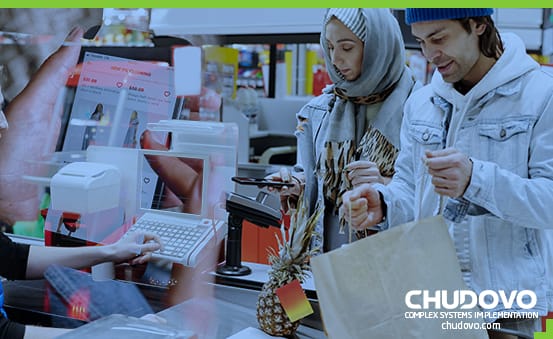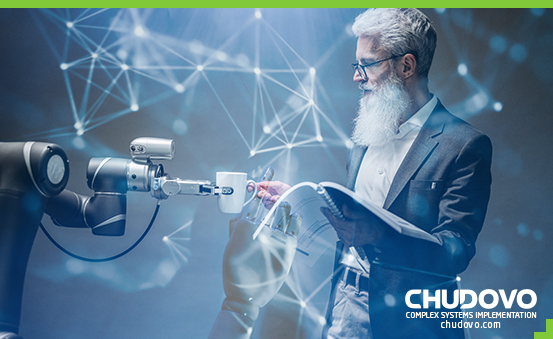How AI and Robotics are Disrupting our lives
In recent times, Artificial Intelligence and Robotics are two of the most disruptive technologies to affect modern society – already having a massive impact on how people go about their lives, from how they work and how they interact with each other, to how safe and secure our homes, workplaces and neighborhoods are. AI and Robotics are also rapidly changing the way people think, learn and communicate, enabling people to do things that were once rendered impossible, from self-driving cars to drones delivering packages, and god-knows what next humans will be capable of all thanks to the fast advancing technologies such as AI and Robotics.
In this article, we will explore the definitions of AI and Robotics for those who doesn’t know the meaning, history of AI and Robotics, the impact of AI and Robotics on job, the use of AI and Robotics in healthcare, education, transportation and agriculture, as well as the ethical implications of AI and Robotics.
Table of Content:
- AI and Robotics Explained
- A sneak peek at the History of AI and Robotics
- How AI and Robotics is disrupting the way we work – old jobs lost and new jobs created
- How AI and Robotics is Disrupting Healthcare
- How AI and Robotics is Disrupting Education
- Exploring the Ethical Implications of AI and Robotics in our lives
- The Future of AI and Robotics – towards a better, easier and greener world
- Conclusion
AI and Robotics Explained
The term ‘artificial intelligence’ (AI) was first coined over 60 years ago by computer scientist John McCarthy. This term refers to the capacity of computers and other machines to analyze data and human behavior, in order to learn and act independently. Artificial intelligence has become increasingly advanced and is now used in many industries.
Robotics on the other hand is an area of technology that combines AI and physical devices, creating machines that can interact with their environment and with other machines – such as robots. AI and robotics have been applied to many aspects of our lives, from self-driving cars to medical equipment and robots.
A sneak peek at the History of AI and Robotics
Artificial Intelligence (AI) and robotics has a long and complex history that dates back to the 1800s. Consider this a run through of how we went from then to now:
Since ancient times, many have sought to replicate the capabilities of humans through mechanical devices, starting with myths that involve gods and goddesses controlling mechanical beings to empower them with human-like qualities. In 1818, Mary Shelley penned the now-famous novel Frankenstein, which explored the ethical implications of creating artificial life.
In the early 1900s, Alan Turing wrote seminal papers on the subject of machine intelligence, and he proposed the now famous Turing Test as a means of determining whether or not a machine was truly intelligent.
In the 1950s and 60s, AI pioneers such as John McCarthy, Marvin Minsky and Herbert Simon developed the field of study further, pushing its boundaries and pushing the limits of technology. This era saw the beginning of robotics, when Japan began building industrial robots in the 1970s.
Over the following decades, AI research continued to accelerate and move forward, developing computers that could beat grandmasters of chess and Jeopardy, as well as autonomous cars and robots. AI has grown to encompass other aspects of our lives, including natural language processing – the recent launch of ChatGPT4 by OpenAI comes in handy here, voice recognition, image recognition, and facial recognition, among many others. AI is now being used in healthcare, finance, and other industries, and its capabilities are only continuing to expand.
As technology continues to advance, AI and robotics will remain at the forefront of innovation, pushing the boundaries of what is possible and pushing us ever closer to the dream of human-like intelligent machines.
That said, here is a run through on how advance technologies like AI and Robotics are disrupting different facets of our lives:
How AI and Robotics are disrupting the way we work – many jobs lost and new jobs created
The impact of artificial intelligence (AI) and robotics on job is a hotly debated topic. AI and robotics are disrupting traditional job. AI and robotics can increase efficiency and productivity by replacing certain manual tasks. In addition, they can use data for informed decision making and automate processes that were previously handled by human labor. As a result, some jobs are being eliminated, while others are being created.
Positive effect: New Jobs will be created
On the one hand, AI and robotics are creating new opportunities for employment. As machine learning and AI become more sophisticated, they begin to solve complex problems and analyze data in ways that pre-existing processes and algorithms cannot. This creates the possibility of an entirely new types of jobs and roles that require comprehensive understanding and expertise in machine learning, AI, and robotics.
Negative effect: Many jobs will be lost
On the other hand, AI and robotics are impacting employment in other ways. Companies are increasingly automating tasks that were previously done manually. This means fewer opportunities for humans to perform these tasks, lowering the demand for human labor in certain industries. In addition, AI and robotics are reducing the need for middle-management roles, as more decisions are being made by automated systems.
The way forward – skills upgrade or retraining
Looking forward, it is clear that AI and robotics will continue to disrupt the labor market. The most effective approach for adjusting to this new reality is for people to upgrade their skills. This could include retraining for a role in the booming fields of AI, machine learning, and robotics, or learning new digital skills. It is also important to stay informed of new developments in AI and robotics and to understand how they may impact future job opportunities.
How AI and Robotics are Disrupting Healthcare
The use of Artificial Intelligence (AI) and Robotics in the healthcare sector has seen meteoric growth in recent years, driven by digital transformation, software development and technology trends. The sophistication of AI and robotics for healthcare has progressed such that it can now be used to create smarter machines, automate processes, and optimize patient care. AI and robotics offer promising technological solutions to the efficient management of healthcare systems, and can help save the planet by reducing the use of resources and conserving energy.
AI and robotics are being used to develop better healthcare solutions and services across the healthcare industry, from managing medical supplies and tracking patient information to supplying personalized medication.
AI and Machine Learning have been used to develop predictive models that allow healthcare organizations to better identify and prioritize the healthcare needs of their patients, enabling them to manage, diagnose, and treat conditions more effectively.

Certified engineers
Convenient rates
Fast start
Profitable conditions
Agreement with
EU company
English and German
speaking engineers
AI and robotics are also being used in the development of connected medical devices, helping to bridge the gap between doctors and patients. Additionally, AI and robotics can help streamline the development of IoT and embedded software in healthcare, ensuring the industry can meet the growing demand for digital transformation technologies.
Robots in our hospitals
Robotics is also making a big contribution to the healthcare space by providing medical robots, assistive tools, and automated diagnostic and analysis systems to help assist medical staff with their tasks.
Robotics can help reduce time in diagnosing and treating patients, and can decrease the occurrence of medical errors. In addition, robotics is being used to develop maintenance robots to perform tedious cleaning tasks and other laborious procedures, freeing up valuable time for medical staff and keeping costs down.
The challenges and opportunities
AI and robotics in healthcare are powerful tools for streamlining processes and improving patient care. However, the industry still faces major challenges in adoption, integration, and ensuring the security and accuracy of technological solutions. There is still more that needs to be done to ensure AI and robotics are used responsibly and ethically, and to ensure technological solutions empower, rather than replace, human workers.
Nevertheless, AI and robotics offer major opportunities for the healthcare sector to optimize, innovate and prepare for the future, making them an important and compelling topic of research with great potential.
How AI and Robotics are Disrupting Education
The use of Artificial Intelligence (AI) and robotics in education are making great strides forward, depicting the complete relationship between AI, robotics, and learning. With the advent of technologies like cloud computing, artificial intelligence, and machine learning, educational institutions have become automated and have experienced rapid digital transformation in the past few years.
AI and robotics have brought about innovative solutions and tools to improve the learning experience for students and teachers alike. AI-powered chatbots are being used to connect students to tutors and aid in their learning process, while automated grading systems and virtual reality-based assessments are making it easier for teachers to assess and track student progress.
Additionally, AI-powered software like computer-aided instruction, quiz-makers, and study guides are providing an interactive and immersive learning experience to students.
In addition, AI and robotics are also being used to create new technology tendencies that can be applied in the classroom. Robotics-assisted lectures, games enabled by AI, 3D virtual classrooms using augmented reality, and simulations-based teaching are introducing a modern take on education. Such technological innovations are providing effective solutions to traditional teaching and learning mediums, enabling universities to act on these major trends and upgrade their curriculums.
Educational institutions have realized the potential of AI, robotics, and machine learning and are investing heavily in the technology and developing new strategies to integrate it into their classrooms. Through the use of software development, machine learning, IoT and embedded systems, AI and robotics are proving to be key players in enhancing the traditional methods of learning and providing a stimulating and dynamic experience to students and teachers alike.
Exploring the Ethical Implications of AI and Robotics in our lives
The ethical implications of artificial intelligence (AI) and robotics is a major topic of debate for the present and future. As technology advances, industry professionals and academics continue to research and discuss the benefits and impact of these innovations. AI and robotics can potentially enable industry-wide improvements that account for cost savings and efficiency gains. However, the automated nature of the technology and its potential applications leave the door open for some ethical concerns.
For example, when it comes to software development, an ethical conundrum arises when considering the use of AI-based software that can automate elements of coding, testing, and development. On one hand, this automation could make certain tasks more efficient and reliable. On the other hand, it could take away jobs from existing workers and decrease job opportunities in the industry.
The impact of robotics can also have ethical implications. For instance, digital transformation trends have introduced robots into systems that interact directly with people. This type of automation has introduced questions as to the potential hazard of robots to people in different scenarios, while also raising concerns regarding the safety of robots in the workplace.
Weighting the gains and the implications
In the end, artificial intelligence and robotics have the potential to offer huge benefits to society by automating many of the mundane tasks and manual processes that consume a lot of time and effort. However, due to the nature of the technology and the complexities of the implementations, it is important to consider the ethical implications carefully in order to ensure that these solutions are used in responsible ways. With the right precautions in place, these technologies can help create a more efficient and secure digital world, while also helping to save the planet by addressing many of the world’s most pressing problems
.
The Future of AI and Robotics – towards a better, smarter and greener world
The future of Artificial Intelligence (AI) and Robotics looks very promising and offers many potentials and opportunities. With increased advancements in the fields of technology, software development and machine learning, we can expect AI and Robotics to become even more integrated into our lives in the future.
AI and Robotics will be used for a wide variety of purposes such as automation of routine tasks, creating more efficient processes, enhancing communication and intelligence, improving customer service and providing data-driven insights.
Innovations in the domain of AI and Robotics will focus on creating smarter and more powerful programs with the help of AI and machine learning techniques. Solutions related to software development and embedded software development will enable machines and computers to learn more complex tasks, allowing them to perform more complex tasks. By focusing on AI and Robotics, we can expect that machines will eventually become even more capable of interacting with humans, as is already being done in certain areas.
Saving our planet using AI and Robots
The potential of AI and Robotics will not be limited to the commercial realm, but their effects will be felt in many other areas as well. For example, they can be used to help save the planet by using AI and Robotics to help with environmental management, waste management and the development of renewable energy sources. Additionally, AI and Robotics can be used to help improve healthcare by providing medical diagnosis, diagnosis of diseases, and even surgical and drug interventions.
Finally, the future of AI and Robotics will also be defined by their impact on human workers. AI and Robotics may eventually take over certain jobs and functions from human workers. However, this will most likely lead to an increased need for human workers, as these machines and robots will be unable to replace certain human skills, such as critical thinking and problem-solving. Overall, the future of AI and Robotics looks very positive and offers great potential for improving our lives and the world.
Conclusion
AI and robotics are disrupting our lives in a revolutionary manner, bringing a whole new set of opportunities and challenges. AI technologies such as machine learning, cloud computing, and digital transformation, are creating intelligent machines and smart machines that are capable of human-like tasks while using machine-driven data to make autonomous decisions.
These technologies have allowed for automation of existing tasks, as well as opened up many new possibilities for future transformations. AI and Robotics are also revolutionizing software development, embedded software development, and the IoT. Despite the potential issues that remain, such as the impact on jobs, AI and Robotics promise us a future of innovative solutions that can have a major positive impact on humanity as a whole.
Over the last 16 years, Chudovo has been providing innovative custom software solutions that add value to our clients’ processes with the highest quality, attention, and professionalism. Our expertise include Idea and strategy formation, Compelling Product Design, Web & Mobile Development, Cloud Solutions Deployment, Digital Transformation Services, and E-commerce development.
Contact us now to learn more about our services that is suitable for your custom needs and to discuss your requirements.




